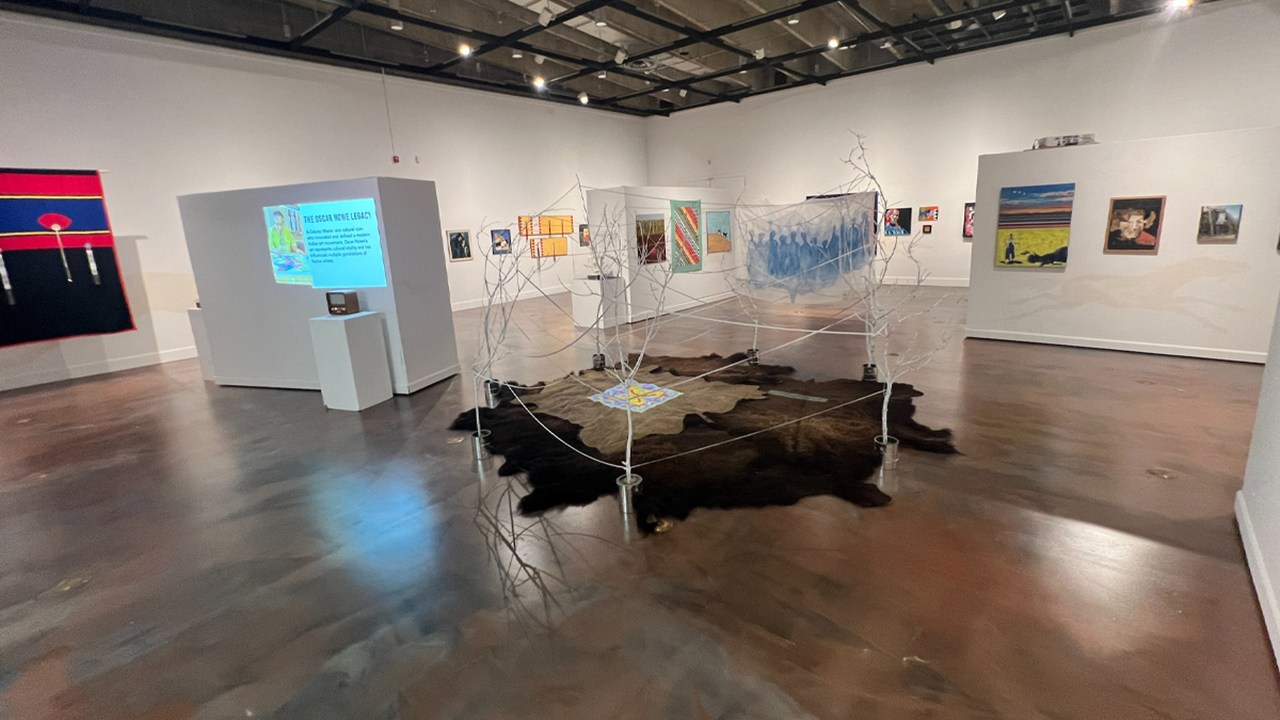Empowering through brush strokes and bold colors, Oscar Howe’s art redefined Native American cultural expression. His legacy empowers, challenging stereotypes and empowering future generations to preserve their heritage through art. Each canvas is a testament to empowerment and tradition.
In the realm of Native American art, the question of who gets to define it has been a recurring and pivotal inquiry. This inquiry finds its roots in the passionate letter penned by Oscar Howe, a Native American artist whose work defied conventional expectations, and whose artistry demanded recognition and autonomy.
The year was 1958 when Oscar Howe submitted a painting to the Philbrook Indian Annual art competition, only to have it rejected by jurors. What angered Howe was not the rejection itself but the reasoning behind it. His painting, marked by bold planes of color and jagged abstract shapes, challenged the established notions of what Native American art should entail. The jurors declared it a “fine painting–but not Indian.” Howe’s response to this rejection was a letter that shook the Native American art world to its core. He argued vehemently, asserting, “Who ever said that my paintings are not in the traditional Indian style, has poor knowledge of Indian art indeed.” His words were not only a plea for artistic recognition but also a call for independence and a break from the stifling grip of conformity. He contended that Native American artists deserved the right to express themselves freely, without being dictated to like children.
Fast forward to today, and Oscar Howe’s letter, along with over 65 of his paintings and drawings, is a prominent feature of the exhibition “Dakota Modern: The Art of Oscar Howe,” currently showcased at the Smithsonian’s National Museum of the American Indian in New York City. Kathleen Ash-Milby, curator of Native American Art at the Portland Art Museum in Oregon, who organized the exhibition, believes that the letter raises a fundamental question that persists: “Who gets to define Native American art?”
Howe’s frustration had been building for years, reflecting the enduring legacy of government officials, art collectors, and educators, mostly non-Native, who wielded influence over the creative expressions of Native American artists. These gatekeepers sought to preserve a particular vision of traditional Native American art, often sheltering artists from external influences and stifling artistic experimentation. For them, art was a tool for economic development, and only marketable creations were encouraged.
The art style prescribed by these gatekeepers, known as the Studio style, emphasized sharply outlined figures, flat colors, and minimal background. Artists who dared to deviate from this convention, like Howe, faced resistance. However, several of Howe’s contemporaries were also exploring abstraction in the 1950s. Yet it was Howe who raised his voice and challenged the status quo. His letter ignited a conversation about the right of Native American artists to self-expression, paving the way for greater artistic freedom.
The debate initiated by Howe in 1958 reverberates today as Native American artists create diverse works across contemporary media. The question of who defines Native American art is a complex one, loaded with assumptions and stereotypes. Concepts like “authentic” and “traditional” are subjective, and curators like Christina Burke emphasize the importance of considering the identity of the maker. For Burke, who is a non-Native curator of Native art, the key lies in how Native artists define what is authentic, regardless of medium or technique.
Native identity itself can be a complex matter, especially for artists. U.S. law stipulates that selling art as Native American requires certification or enrollment in a federally or state-recognized tribe. Each tribe has its own citizenship criteria, often involving varying degrees of hereditary descent. Native people in the U.S. are unique in having their identity monitored by the federal government, leading to further complexity.
Oscar Howe’s legacy extends beyond his famous letter. Born in 1915, he grew up on a South Dakota reservation, deeply connected to his Dakota heritage. He enrolled in the Studio School as a teenager, where he was taught the traditional Native American art style, which he would later challenge. Despite his creative evolution, Howe remained committed to preserving Dakota culture and tradition, viewing his art as a means of storytelling and cultural preservation.
Inspired by his grandmother and fueled by a desire to pass down the knowledge of his people, Howe’s art encapsulated Dakota stories and customs. He conducted meticulous research to honor the authenticity of his subjects. Despite pushing the boundaries of traditional Native American art, he considered himself a traditional artist, rooted in his Dakota heritage. His use of color palettes and designs borrowed from Dakota and Lakota art, paying homage to his ancestral roots.
Oscar Howe’s art was ahead of its time, making it challenging for critics to categorize. His work defied the dichotomy of being both a Native American and a modern artist. As Kathleen Ash-Milby remarks, “the art world was not ready to see him as both a Native American and a modern artist.”
In a world where the definition of Native American art remains fluid and subjective, Oscar Howe’s legacy continues to inspire artists and challenge traditional boundaries. The “Dakota Modern: The Art of Oscar Howe” exhibition celebrates his artistry, telling a story of resilience, cultural preservation, and the unyielding pursuit of artistic freedom.
The exhibition is currently on display at the National Museum of the American Indian in New York City and will travel to the Portland Art Museum in Oregon and the South Dakota Art Museum at South Dakota State University in Brookings in the coming months, ensuring that Oscar Howe’s message of artistic independence reaches a wider audience.



































